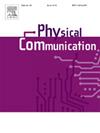Anti-UAV detection and identification technology: Fundamentals, methods and challenges
IF 2
4区 计算机科学
Q3 ENGINEERING, ELECTRICAL & ELECTRONIC
引用次数: 0
Abstract
The rapid development of unmanned aerial vehicle (UAV) technology has driven its widespread application in military, commercial, and civilian domains, such as surveillance, logistics, and disaster response. However, this growing popularity has also raised serious security and privacy concerns, as UAVs can be misused for smuggling, espionage, terrorism, and other illegal activities. As a result, anti-UAV detection and identification technologies have become a critical research area for monitoring, identifying, and mitigating the threats posed by rogue drones. This paper provides a comprehensive review of the latest advancements in anti-UAV detection and identification technologies. To deepen the understanding of these technologies, the paper first introduces the UAV system (UAS) framework and its corresponding anti-UAV systems. Subsequently, it presents an in-depth analysis of the primary detection and identification methods, including those based on image processing, radio frequency (RF) signals, radar, infrared characteristics, acoustic features, and multi-modal fusion. The advantages, limitations, and application scenarios of each method are systematically compared and summarized. Furthermore, this paper identifies the major challenges faced by current anti-UAV detection technologies, such as detection accuracy, range, robustness, and cost, and explores potential directions for future research and development. By synthesizing these insights, this paper aims to provide researchers and practitioners with a comprehensive understanding of the current state of the art in anti-UAV technologies, serving as a valuable reference to advance research progress and foster innovation in this critical field.
求助全文
约1分钟内获得全文
求助全文
来源期刊

Physical Communication
ENGINEERING, ELECTRICAL & ELECTRONICTELECO-TELECOMMUNICATIONS
CiteScore
5.00
自引率
9.10%
发文量
212
审稿时长
55 days
期刊介绍:
PHYCOM: Physical Communication is an international and archival journal providing complete coverage of all topics of interest to those involved in all aspects of physical layer communications. Theoretical research contributions presenting new techniques, concepts or analyses, applied contributions reporting on experiences and experiments, and tutorials are published.
Topics of interest include but are not limited to:
Physical layer issues of Wireless Local Area Networks, WiMAX, Wireless Mesh Networks, Sensor and Ad Hoc Networks, PCS Systems; Radio access protocols and algorithms for the physical layer; Spread Spectrum Communications; Channel Modeling; Detection and Estimation; Modulation and Coding; Multiplexing and Carrier Techniques; Broadband Wireless Communications; Wireless Personal Communications; Multi-user Detection; Signal Separation and Interference rejection: Multimedia Communications over Wireless; DSP Applications to Wireless Systems; Experimental and Prototype Results; Multiple Access Techniques; Space-time Processing; Synchronization Techniques; Error Control Techniques; Cryptography; Software Radios; Tracking; Resource Allocation and Inference Management; Multi-rate and Multi-carrier Communications; Cross layer Design and Optimization; Propagation and Channel Characterization; OFDM Systems; MIMO Systems; Ultra-Wideband Communications; Cognitive Radio System Architectures; Platforms and Hardware Implementations for the Support of Cognitive, Radio Systems; Cognitive Radio Resource Management and Dynamic Spectrum Sharing.
 求助内容:
求助内容: 应助结果提醒方式:
应助结果提醒方式:


